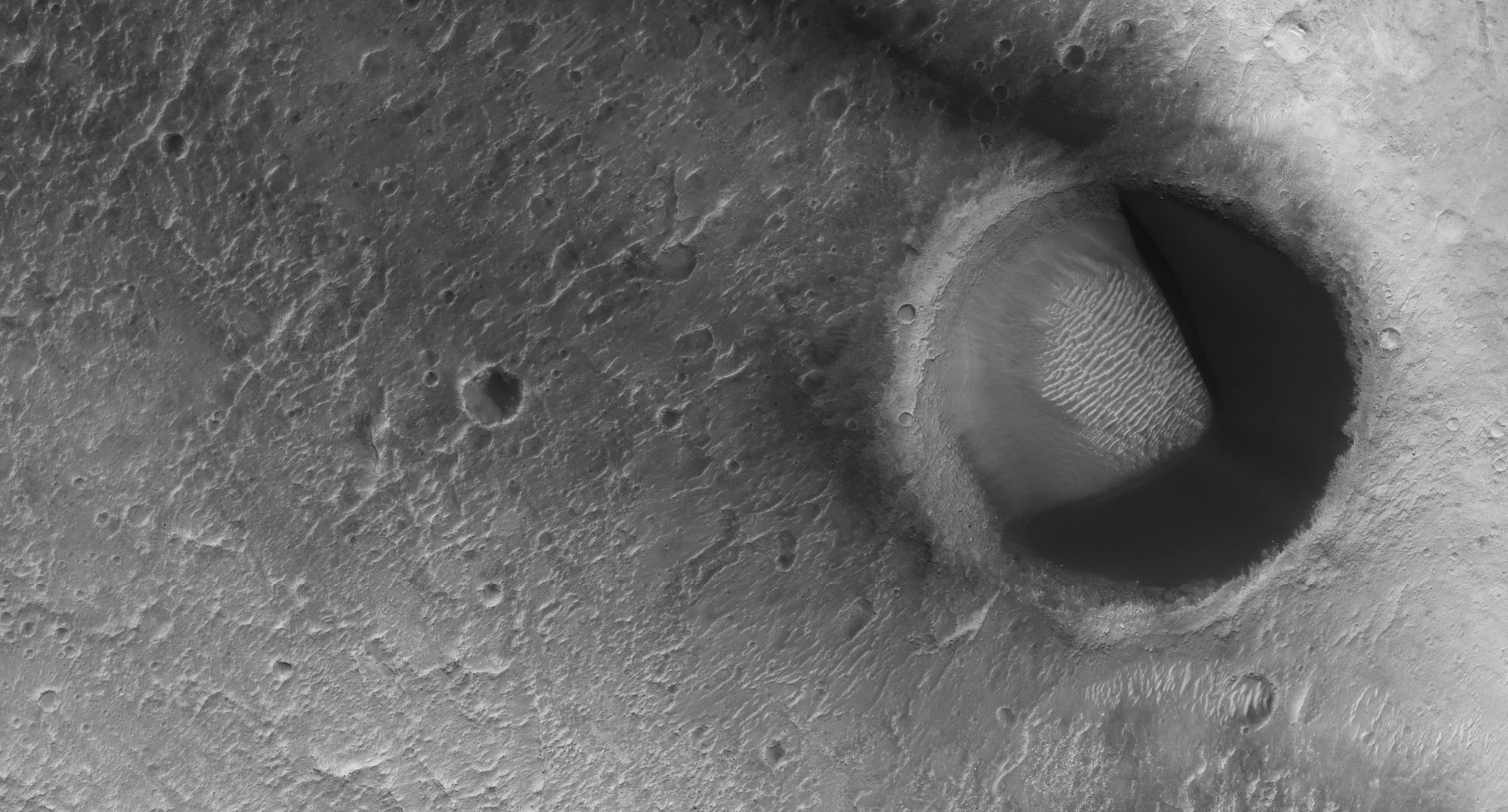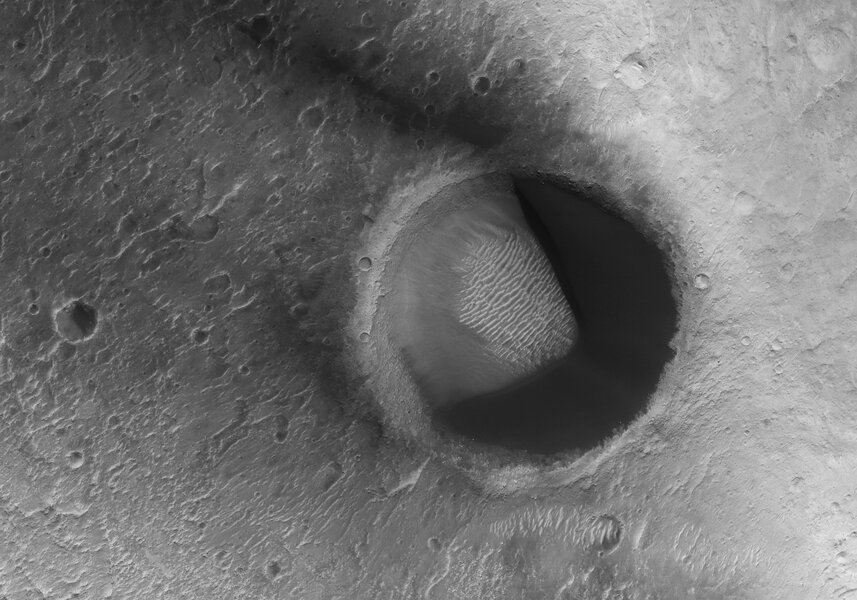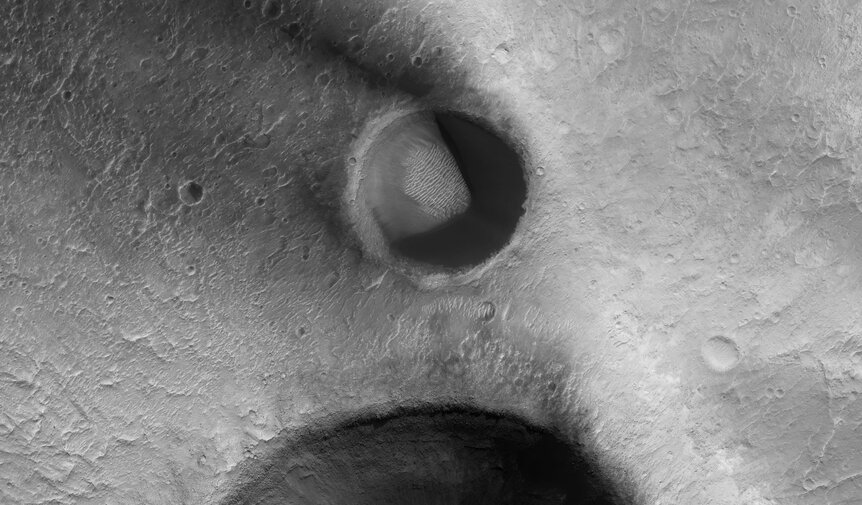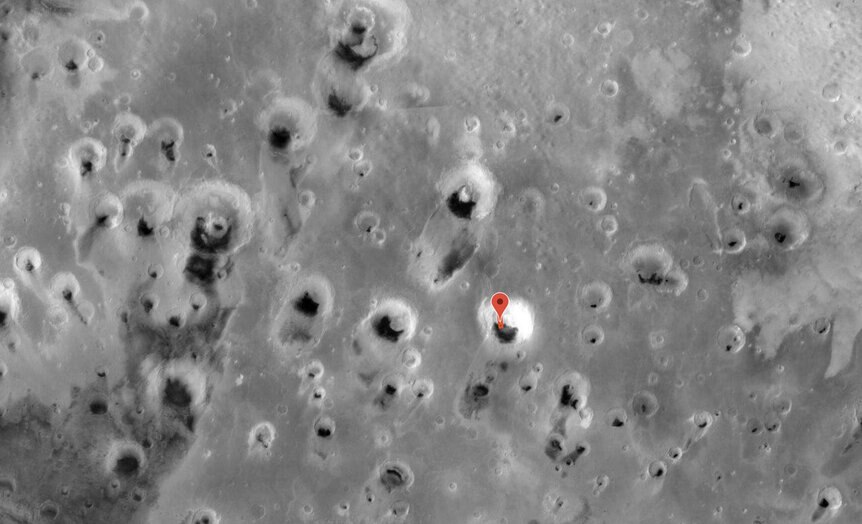Create a free profile to get unlimited access to exclusive videos, sweepstakes, and more!
A Pac-Man crater on Mars

Mars doesn't have much of an atmosphere. The surface pressure of the air on Mars is only about 0.6% Earth's, equivalent to being more than 30 kilometers above Earth's surface. The peak of Mt. Everest is 8.9 km above sea level on Earth, so yeah, we're talking thin air on the Red Planet.
But it's there. And if you have air, you have wind.
Because the air is thin, the force of the wind is extremely low. A 200 kilometer per hour wind on Earth would blow you right off your feet, but on Mars it would feel like a breeze. Still, it's enough that, over time, it can move around small grains of sand and dust, sculpting them into dunes.
We see dunes in lots of places on Mars, but they tend to form where the wind is steady and coming from one direction. That happens in the plains, where images from orbiting spacecraft have spotted all kinds of interesting formations. They're beautiful and fun to look at, and I've enjoyed perusing images of them. But as many as I've seen, I was still surprised when I saw this one, taken using the HiRISE camera on the Mars Reconnaissance Orbiter: A barchan dune inside a crater!
Did I say barchan? Maybe I meant Pac-Man. Wokka wokka wokka.
Barchan (arrowhead- or horseshoe-crab-shaped) dunes usually form in large flat areas. I've written about them on Mars before:
They can form when the wind blows predominantly from one direction. If there's an obstacle, like a big rock or small hill, the wind will blow around the obstacle, the same way water flows around a rock. Sand will pile up on the leading edge and also be swept around to the backside. Eddies in the wind create circular currents on the downwind side, building up walls of sand on the sides and creating that horseshoe crab-like appearance.
Eventually, you get a long, shallow slope leading to a crest, a sharp edge, then a steeper slope downwind. The wind supports the sand from rolling back down the upwind side, but downwind the sand is free to roll down, creating a steeper slope. The long arms leading downwind are due to the eddies in the wind behind the obstacle.
I've never seen one so well formed inside a crater before, though! The unnamed crater is about 5 km across, to give you a sense of scale. It's actually an impact crater inside a much larger impact crater called Marth, which is nearly 100 km across and sits not too far north of the Martian equator at a latitude of 13°. In this image, the wind blows more or less from the right (at about the 4:00 position). When the wind hits the crater rim it splits and flows around it just like water in a stream around a rock. Fine-grained dark dust flowing with the wind flows up and into the small crater, piling up to form the barchan dune.
The grains that don't go into the crater follow the wind downstream, forming those long tails above and below the crater. It's interesting that the tails aren't parallel! The one on the bottom flows upward more than I would have expected. When you look at the wider-angle view of this region, you can see a much larger crater at the bottom; perhaps that affects the wind flow around the smaller crater.
That dark dune is not the only dune in the crater, though! Inside the barchan dune's "mouth" is a series of brighter, nearly parallel ripple dunes. These are more like the usual kinds of dunes you see on Earth when you think "Sahara." They're called transverse dunes because they form stripes perpendicular to the wind direction, when coarser grained material piles up. They remind me of washboard ripples in a heavily used dirt road.
Normally, in a dune field on a plain, barchan dunes are more elongated (they look like the Federation shield from Star Trek, in fact). But this one, framed by the crater wall and rim, is wider. I can't believe how much it looks like Pac-Man.
Over the decades, Mars has featured heavily in pop culture. I never dreamed pop culture would feature so heavily on it.





























